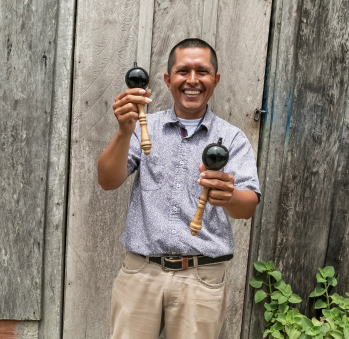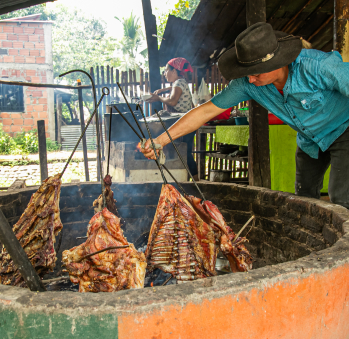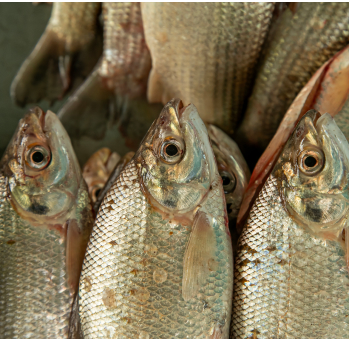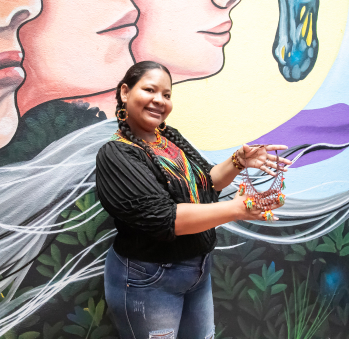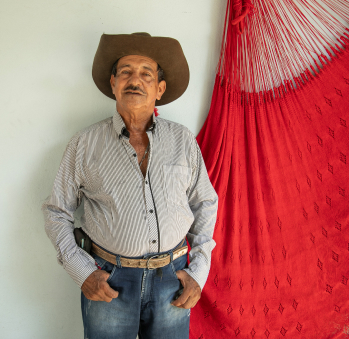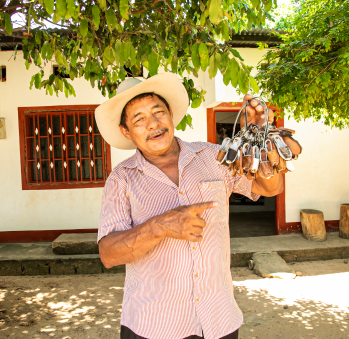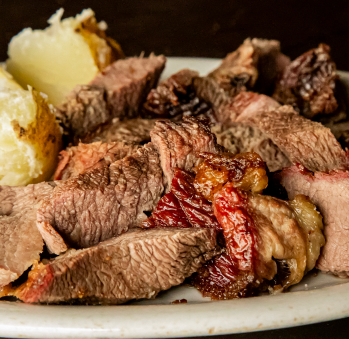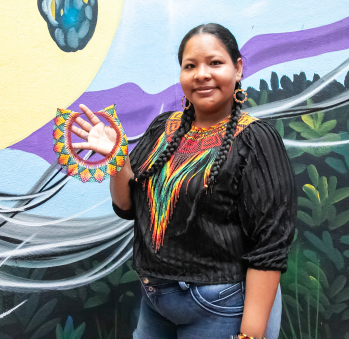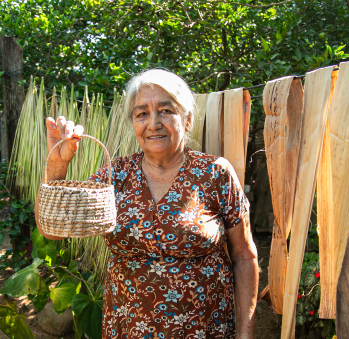Arauca Route
The encounter between indigenous people, liberators, and settlers shaped for years what we now know as Arauca, a land where borders blend between plains, rivers, and forests. History tells that in its capital, Simón Bolívar met with his liberation council, and for that singular day, July 16, 1816, Arauca became the capital of the country. During your visit to the department, you will come across multiple sites of historical importance. To better understand its recent history, it’s worth considering that many of its inhabitants are descendants of travelers who arrived seeking lands, following rumors describing its beautiful landscapes. Such is the case for several artisans we want you to meet, who arrived in Arauca bringing along their cultural heritage, cuisines, and artisanal customs from their native lands, such as the weaving from Boyacá or shoemaking from Santander. There are also those who, upon arriving and encountering the llanero culture of these lands and its nature, learned to work with leather, wood, and bone, or who descend from an ancient indigenous lineage and dedicate themselves to keeping their artisanal tradition alive, deeply tied to the territory.
While tourism wasn’t the department’s strength until a few years ago, we encourage you to explore its potential while supporting its recovery process from the violence that plagued it for decades. Here, birds, reptiles, dolphins, capybaras, and, of course, cattle, a fundamental piece of llanera culture, abound. The local culture is enriched by its songs and dances like the joropo. Prepare yourself for hot and humid days as you travel through its fields filled with plantain, rice, fish farming, and petroleum, in addition to discovering its surprising recent wealth: cocoa, awarded as one of the world’s best.
Embark on a journey full of history

Artisans along the way
Artisans along the way
We recommended this tour
4 days
Low
Car or Bus
Schedule the visit in advance with the artisans.
Carry cash
Preferably go with a tour operator
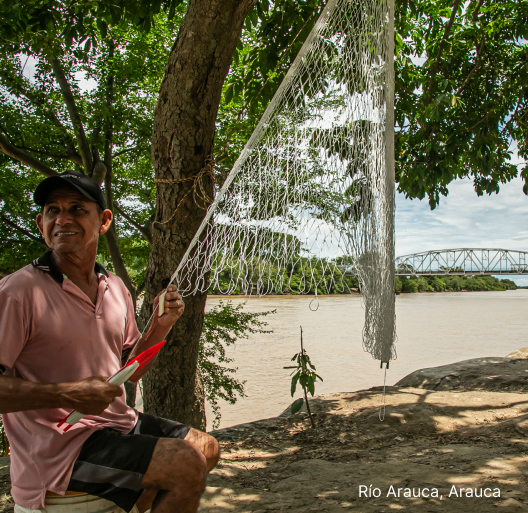
ARAUCA
In Arauca, a city where borders merge, you’ll encounter its friendly people who are adept at the joropo dance. These two qualities are perfectly exemplified by the first two artisans of the Arauca Route. There’s Estefanía Arrieta, a bead weaver whose joyful spirit will infect you, and Orlando Osorio, who crafts traditional leather “cotizas,” essential in the joropo dance. At the Malecón, on the riverbank that separates Colombia from Venezuela, you can experience local culture, meet its fishermen, and chile and atarraya net weavers. Nearby is the International Bridge José Antonio Páez, an important point for trade and the flow of people between Colombia and Venezuela. You can also visit monuments that exalt the region’s cattle culture and its page in the history of independence, including Bolívar Park. If you’re into ecotourism, you can book a bird watching tour or a dolphin watching tour to experience the department’s great diversity firsthand, or visit the Parque Ecológico del Llano.
ARAUQUITA— SARAVENA — FORTUL — TAME
On your way to Arauquita, 98 kilometers from the capital, you’ll find the Monument to Cocoa Park, a place entirely devoted to this delicious fruit where you’ll learn about its processing. Upon arriving in Arauquita, the Arauca River’s waters will still accompany you, which you can appreciate from the Malecón or by bathing in the beaches along its banks. Here, you’ll be greeted by artisan María José Fernández, a disciplined woman who has dedicated years to studying and perfecting weaving with banana stem fibers.
Wake up in Arauquita and head to Saravena, 58 kilometers away, where Dámaso Caicedo’s hammocks and José Claudio Vázquez’s wooden carved animals will show you another side of the llanerp culture. Take the opportunity to see the wide Bojaba River from the bridge that crosses it toward Boyacá and taste products made with excellent local cocoa at Más que Cacao. Return to the road towards Fortul to meet Wilmer Fabián Jaimes, a musician and luthier crafting bone rests and totumo maracas, and spend the night in Tame, 27 kilometers from Fortul.
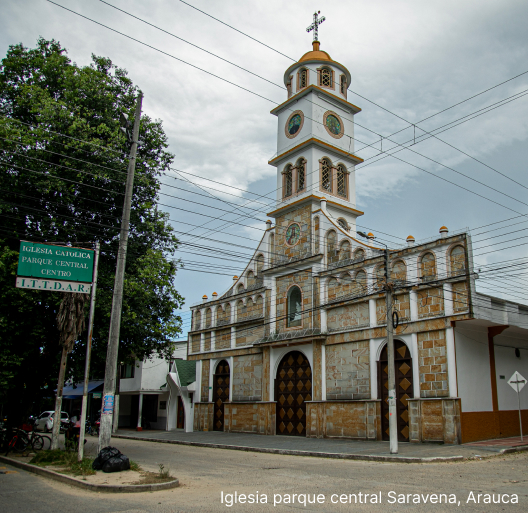
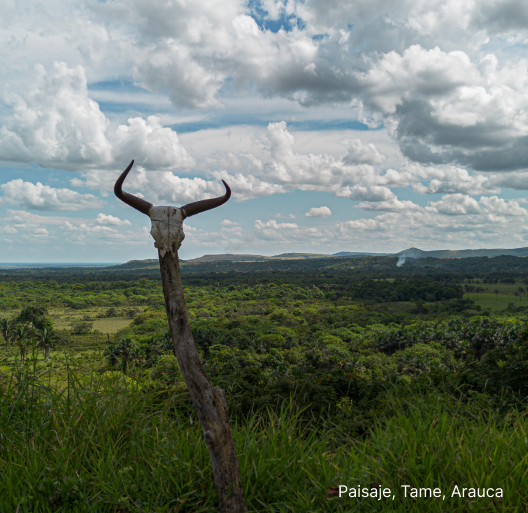
TAME
In Tame, the tourism and historical capital of the department, the encounter between Simón Bolívar and Francisco de Paula Santander took place. During your visit, you’ll find numerous monuments commemorating the importance of this region for the country’s freedom in the General Santander Park and the Church of the Divine Child. We conclude this artisanal route on a high note. Ana Delia will showcase the weaving heritage she brought from Boyacá, and the charismatic Pedro Solórzano will tell you more about leatherworking and llanero life while singing one of the passages composed for his beloved land.
At the Tame Biopark, you can walk a special trail for bird watching. Remember that in Tame, you’ll be very close to El Cocuy National Natural Park if you wish to extend your visit from the llanero heat to the cold of the páramo and snow-capped peaks.

Traditional cuisine
and typical bites
Provoke yourself

Don't leave without eating this 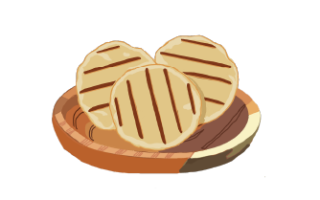
La cocina tradicional de Arauca es una mezcla de la gastronomía llanera, andina y amazónica, por lo cual encontrarás diversidad de sabores, colores y aromas que reflejan la diversidad cultural y natural de esta región, influenciada por los productos de río, la carne y su abundante agricultura. Los alimentos más importantes de la gastronomía local son el cacao, el plátano, la yuca, el arroz, el maíz y las frutas. Los platos más tradicionales de la zona se inspiran en la cocina del Amazonas, así como de los departamentos colindantes y la vecina Venezuela. Sus recetas más típicas son las hallacas, el pisillo de pescado, la carne asada y el chigüiro. Además, debes probar las bebidas más populares de la región, entre las cuales se encuentran el majule (bebida de banano o plátano topocho maduro) y el vinete (bebida que se extrae de palma de moriche o palma real). Finalmente, un imperdible: el dulce de huevos de tortuga, uno de sus postres más tradicionales. La cocina araucana es una expresión de la identidad y la tradición de su gente, que sabe combinar lo sencillo con lo delicioso. Estos platos son una invitación a descubrir los secretos y las historias que se esconden detrás de cada bocado.
Si quieres probar estos y otros platos deliciosos de Arauca, puedes visitar algunos de los restaurantes que ofrecen comida típica de la región como Matencandela Punto Criollo, Asadero La Jaula, Restaurante La Gallina Política, El Caney de Doña Nora y El Restaurante Cerecere.
To lunch we go 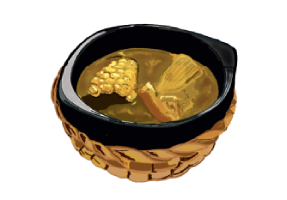
Es complejo diferenciar las comidas en territorios similares tanto por los nombres como por sus preparaciones, sin embargo, hay que tener presente que cada territorio aporta sus saberes a la preparación de las recetas. La mamona o ternera a la llanera es carne de ternero (bovinos muy jóvenes) asada al carbón con sal y especias, que se sirve con yuca, papa y plátano asados. Se caracteriza por la suavidad de la carne y su sabor único al ser preparada en vara a las brasas. Por su parte, el pisillo es carne, o pescado, seco y desmenuzado, que se cocina con cebolla, tomate y condimentos. Se puede acompañar con arepa o casabe (torta delgada de harina de yuca): inicialmente fue una forma de conservar los alimentos, pero terminó volviéndose una receta tradicional del Llano. Finalmente, prueba el chigüiro, un roedor de gran tamaño que se consume asado, guisado o en pisillo. Se trata de una carne magra y de sabor intenso, que se suele acompañar con yuca o arroz. Su expendio de manera comercial está prohibido, sin embargo, es frecuente que sea la comida de los llaneros, y uno que otro turista afortunado. Es muy similar al cerdo en apariencia, pero no en sabor y ya preparados son muy difíciles de diferenciar. En donde Doña Chela te va a sorprender, así como en Terrazas Restaurante. Pero si lo que quieres es pescado con seguridad en el Estadero La Cachama del Palmar lo encontrarás.
Flavors to discover and snack on 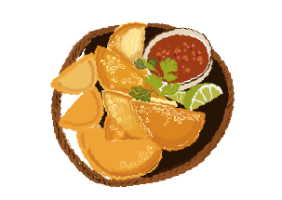
Las hallacas (que conocemos también como tamalitos) son hechas con masa de maíz rellena de carne de res, cerdo, gallina o chigüiro, con zanahoria, arvejas y aliños. Se envuelven en hoja de plátano y se cocina al vapor. También están las cachapas, unas especies de tortitas gruesas de maíz tierno molido, que se cocinan a la plancha y se rellenan con queso blanco llanero. Es un tipo de arepa que integra ingredientes de diferentes culturas y países. Los colombianos podemos decir que son la versión “llanera” de nuestra arepa de chócolo (o maíz tierno) y el abasute (huevos revueltos con guiso y envueltos en hoja de bijao). Estas delicias las podemos probar en las plazas de Mercado de los diferentes municipios.
To sweeten the palate and unmissable drinks 
El dulce de huevos de tortuga es un postre típico de Arauca, que se prepara, como su nombre lo indica, con huevos de tortuga, panela, canela y leche. Al cocinarse termina siendo un tipo de flan o quesillo por lo cual se han venido sustituyendo los huevos de tortuga por los de gallina, gracias a la conciencia que se ha tomado alrededor de la conservación de las tortugas. Este dulce se puede servir frío o caliente, y se puede acompañar con queso rallado. Es un postre que hace parte de la tradición culinaria de la región Orinoquía y que se consume en ocasiones especiales, como la Navidad.
La mazamorra de maíz es un postre espeso que se prepara con maíz tierno, leche, panela y clavos de olor. Se puede comer sola o con queso. Y los buñuelos con miel, bocadillos fritos que se hacen con harina de maíz, queso, huevo y sal. Se bañan con miel de panela y se sirven calientes.
El cacao de Arauca tiene una calidad superior y un sabor y aroma únicos, que lo distinguen de otros tipos de cacao. Según la Organización Internacional de Cacao (ICCO), solo el 8% del cacao mundial es fino y de aroma, y el 76% se produce en Colombia, Ecuador, Perú y Venezuela. Esas características del cacao provienen principalmente de frutos criollos y trinitarios, que tienen un perfil aromático complejo, con notas frutales, florales, herbales, de malta y de nueces. El cacao de Arauca ha ganado varios premios internacionales por su calidad y sabor. No hace parte de la cocina tradicional, pero es un imperdible de la gastronomía del departamento. Hay que disfrutarse alguna de las rutas del cacao y entender por qué es un viaje más allá del chocolate.
Una de las bebidas más tradicionales en Arauca es el majule, una bebida dulce y espesa que se prepara con plátano maduro, panela, canela y leche. Tómalo caliente o frío, y le puedes añadir, si quieres, queso rallado. Se consume como postre o como acompañamiento de otros platos llaneros. También está el vinete, que es una bebida refrescante que se hace con agua, panela, limón y hojas de vinagrillo o de la salvia de la palma de chontaduro, palma real . Se deja fermentar por unos días y se sirve con hielo. Es excelente para hidratarse y refrescarse en el clima cálido de la región.
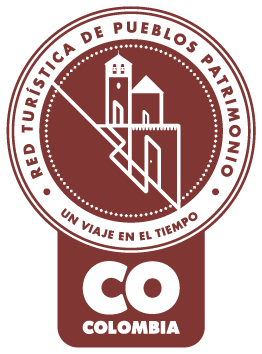
Pueblo Patrimonio
La Red Turística de Pueblos Patrimonio de Colombia es un programa especial del Ministerio de Comercio, Industria y Turismo, ejecutado por FONTUR, que trabaja con 17 municipios de Colombia que poseen declaratoria de Bien de Interés Cultural (BIC) a nivel nacional para su valoración y proyección mediante el turismo, generando así más oportunidades de desarrollo y sostenibilidad en las comunidades.

La Medalla a la Maestría Artesanal es un galardón que Artesanías de Colombia entrega anualmente, con el cual se hace un reconocimiento a aquellos artesanos, empresas y comunidades artesanales que, contando con una trayectoria destacada, sobresalen a nivel nacional por su excelencia en el oficio así como por preservar el quehacer artesanal.

Denominación de Origen
Es un signo distintivo que identifica productos reconocidos o famosos por tener una calidad o características específicas derivadas esencialmente del lugar de origen y la forma tradicional de extracción, elaboración y producción por parte de sus habitantes. La protección conferida sobre una Denominación de Origen implica que ninguna persona puede identificar con la denominación protegida productos iguales o similares a los amparados, cuando no provengan del verdadero lugar y no cumplan con las características o calidades que le han dado la reputación al producto reconocido. Las Denominaciones de Origen para productos artesanales colombianos que han sido protegidas por la Superintendencia de Industria y Comercio en nuestro país son actualmente 12.
No puede copiar contenido de esta página









































